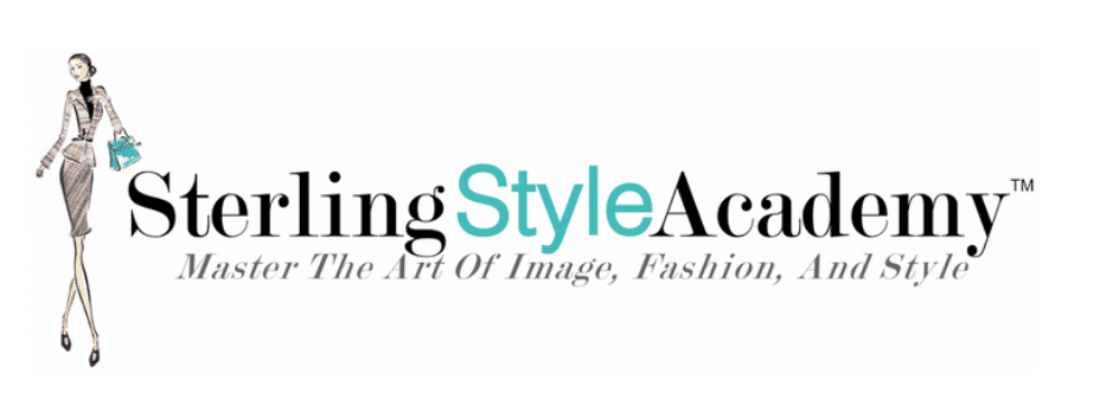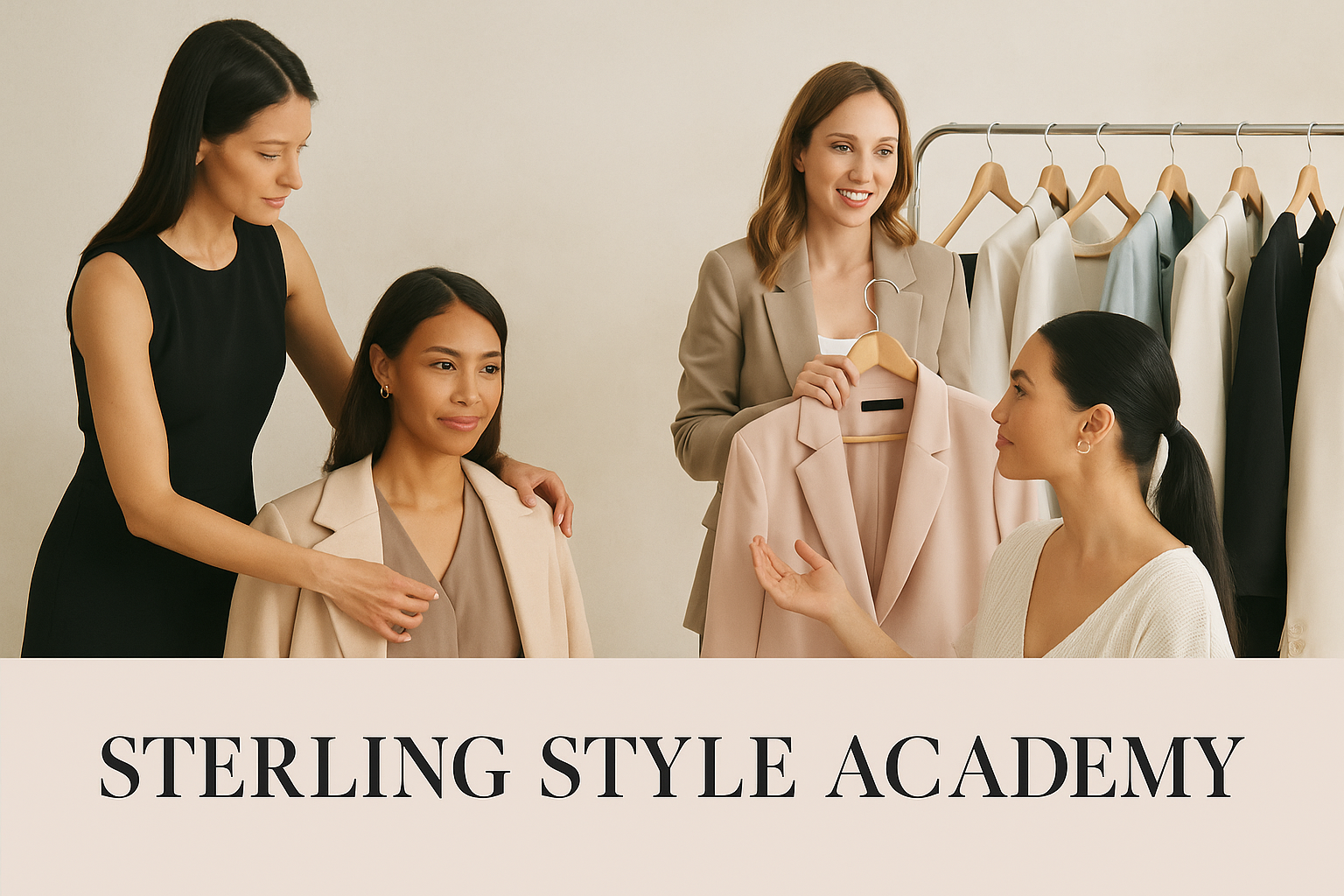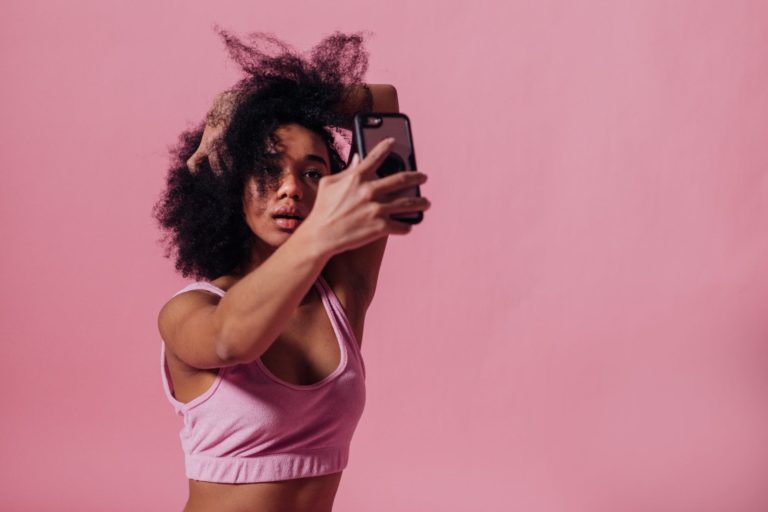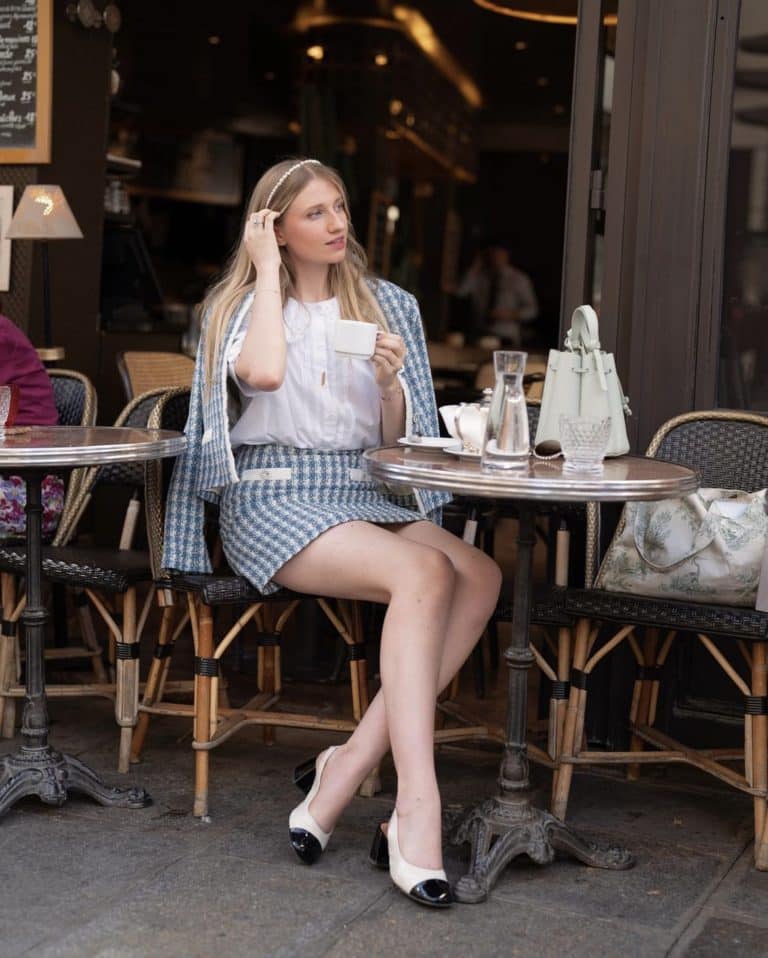Personal Shopper vs. Personal Stylist Ultimate Guide: What’s the Difference?
For those who are interested in the world of fashion, you might have heard the terms personal shopper and personal stylist. At first glance, they may seem like they have the same job description, but that isn’t entirely true. Both professions have different skill sets, and it all boils down to their approach to dressing and helping clients with their fashion choices. If you are interested in pursuing a career in either of these fields, you need to know the difference to make sure that you choose the right path. In this blog, we’ll walk you through the differences between a personal shopper and a personal stylist.
- What is a Personal Shopper?
- What is a Personal Stylist?
- Differences between a Personal Shopper and a Personal Stylist
- How to Choose Between Being a Personal Shopper and Personal Stylist
- What You Need to Know: The Rules of a Personal Stylist
- Styling 101: Understanding the Basics
- The Career Path of a Stylist: How to Become a Personal Stylist
- Qualities of a Great Personal Stylist
- The Ins and Outs of Operating a Personal Styling Business
- How to Create an Impressive Stylist Portfolio
What is a Personal Shopper?
A personal shopper’s main focus is on buying clothes and accessories for their clients. They are responsible for taking their client’s shopping and helping them choose outfits that align with their sense of style. Personal shoppers are familiar with the best stores and brands and have a comprehensive understanding of what’s trending in fashion. They also have an excellent network of designers and retailers to source clothing from. Personal shoppers also take into consideration budget and the specific occasion for which clothes are needed.
What is a Personal Stylist?
In contrast, a personal stylist’s job is to help clients define their personal style and build a wardrobe that reflects that. They work with individual clients to help them figure out what clothes flatter their body shape, size, and complexion. Personal stylists work on developing a client’s aesthetic and teach them how to maintain it. They encourage their clients to try out new styles and trends without compromising on their individuality and authenticity.
Differences between a Personal Shopper and a Personal Stylist
The most fundamental difference between a personal shopper and a personal stylist is that a personal shopper’s primary responsibility is to procure clothing for their clients, whereas personal stylists focus on developing their clients’ style. Personal shoppers also typically shop in stores, while personal stylists work with more high-profile clients, often styling for red-carpet events or editorials.
Personal stylists work closely with their clients one-on-one. They take into account the client’s body type, personality, and likes/dislikes to create a wardrobe that reflects the client’s needs, lifestyle, and goals. They also educate their clients on fashion, grooming, and etiquette, giving them the tools to maintain their style independently.
Personal shoppers, while skilled at shopping, may not necessarily be fashion experts. They are great at selecting clothing, but they might not be able to select clothing that matches the client’s brand – as that falls in styling domain.
How to Choose Between Being a Personal Shopper and Personal Stylist
Choosing whether to go into personal shopping or styling depends on your interests and skills. If you love shopping and have extensive knowledge of fashion, you might enjoy the work of a personal shopper. However, if you have a good eye for style, love working with people, and have a keen creative flair, you’ll find much more pleasure in personal styling. Consider the time you have available, how willing you are to learn new skills, and the level of financial investment you can make when deciding.
In conclusion, while personal shopping and personal styling seem similar, there are distinct differences in their roles, responsibilities, and skill sets. A personal shopper’s focus is on buying clothes for clients, whereas a personal stylist’s focus is on developing clients’ personal style and teaching them skills to maintain it. Deciding which to pursue depends on individual interests and skills, but either path can be an incredibly gratifying career in the fashion industry. Whatever you opt for, continually studying fashion and the latest fashion trends will excite your clients and motivate you to grow your career.



What You Need to Know: The Rules of a Personal Stylist
If you have a keen eye for fashion and love helping others look their best, becoming a personal stylist might be the perfect career choice for you. But before you deep dive into the field of styling, it’s important to understand the rules that come with the territory. Personal styling requires more than just picking out cute outfits and accessories for your clients. There are certain guidelines and etiquette that professional personal stylists should adhere to. In this blog post, we’ll break down the rules of a personal stylist that you need to know before pursuing this career.
1. Confidentiality is Key
As a personal stylist, your clients are trusting you with their image, and it’s essential to keep their privacy and maintain their confidentiality. Personal styling may reveal personal information that should never be shared with others. You will have access to information about your clients’ lives, sizes, style, and budget, so it’s critical that you handle this information with discretion.
2. Respect Your Clients’ Fashion Preferences
As a personal stylist, you should never insist on your fashion choices for your client. You should always consider their preferences, lifestyle, and body type while picking out clothes and accessories for them. You are there to help accentuate their style and taste, not to change it. While it’s okay to make suggestions here and there, you should always prioritize your clients’ satisfaction.
3. Stay Up-to-Date with the Latest Fashion Trends
A personal stylist should always be updated with the latest fashion trends. You should attend fashion shows, read fashion magazines and blogs, and follow fashion influencers. This will help you keep your clients stylish and on-trend. However, it would be best if you always remembered that the most important aspect of personal styling is personalization, and not every trend works for every client.
4. Professionalism is Key
As a personal stylist, you are expected to be professional at all times. This includes dressing professionally, being on time, crafting exceptional outfits, and following through on commitments. Your punctuality, relationships, and organization are critical, and any small lapse in professionalism could cost your clients, time, money, and confidence in your services.
5. Ethics and Honesty
Finally, a personal stylist should always be honest with their clients. Be honest about your capabilities, expenses, and fees. Do not make promises you can’t keep, and instead, deliver on your commitments. Integrity is crucial when it comes to personal styling and building a trustful relationship.
Personal styling is a fantastic career choice, but it comes with great responsibility. The rules of a personal stylist typically revolve around respecting your clients, maintaining confidentiality, being professional, and creating a reputable image. It’s crucial to be mindful of these rules and strive to abide by them, providing impeccable styling services that your clients will keep coming back to. By taking the time to understand these rules, you’ll be well on your way to becoming a respected and admired personal stylist.
Styling 101: Understanding the Basics
The world of fashion and styling seems glamorous and luxurious from the outside, but it’s a complex field that requires knowledge, skills, and expertise. Being a personal stylist has become a popular career choice, and it comes with its perks and challenges. A personal stylist is someone who works with individuals to create their image and style. To become a successful personal stylist, it’s essential to understand the basics of styling. In this blog post, we’ll take a closer look at what styling is, why it’s important, and the basics of styling that every budding stylist must know.
1. Understanding Styling:
Styling is a way of arranging clothes and accessories to create a unique and cohesive look. A stylist’s job is to showcase their clients’ physical attributes and personality through the clothes they wear. Styling involves choosing colors, fabrics, silhouettes, patterns, and accessories that complement each other and the clients’ features. A stylist considers the occasion, the client’s preferences, and the current fashion trends to curate a personalized ensemble.
2. Color Theory:
Color is an integral part of fashion, and understanding color theory is crucial for any stylist. Color theory involves the relationship between different colors and how they influence human psychology. A stylist should know which colors complement each other and which ones clash. They should also know how to use color to create a mood or evoke an emotion in their client’s outfit. Colors can convey confidence, tranquility, excitement, or sophistication, and knowing how to use them effectively can take you a long way in the styling world.
3. Body Shape:
Another important aspect of styling is understanding body shape and type. Every individual has a unique body shape, and a stylist’s job is to draw attention to the client’s best features while downplaying the ones they don’t like. A stylist should be able to analyze the client’s body shape and suggest outfits that flatter their curves, slim down certain areas, and create a balanced look overall.
4. Accessories:
Accessories can make or break an outfit, and it’s important to choose them carefully. A stylist should know which accessories suit their client’s personality and preferences. Accessories can add a pop of color, texture, and interest to any outfit, and knowing how to mix and match them is an art. A stylist should also consider the occasion while choosing accessories and create a cohesive look that ties everything together beautifully.
5. Personal Stylist Essentials:
Finally, to become a professional personal stylist, you need to have some essentials in your tool kit. These include a sewing kit, an iron, a steamer, garment tape, pin-ups, fashion magazines, and a styling book that you can refer to for inspiration. A personal stylist should keep up to date with the latest fashion trends and be able to adapt them to suit their client’s needs. Communication skills, networking, and attention to detail are also crucial for a successful career in styling.
Styling is an art that requires creativity, knowledge, and a keen eye for detail. Personal styling has become a popular career choice, and to excel in this field, it’s essential to understand the basics of styling. Understanding styling, color theory, body shape, accessories, and having personal stylist essentials in your tool kit are all crucial for a personal stylist’s success. With practice, patience, and perseverance, anyone with a passion for fashion and styling can excel in this field and create a niche for themselves especially when you become a certified stylist. Take Online Stylist Training and get certified for US$997.
The Career Path of a Stylist: How to Become a Personal Stylist
If you have a passion for fashion, you might be interested in pursuing a career as a personal stylist. While styling may seem like a glamorous job, it’s important to understand that it takes hard work, dedication, and knowledge of the industry. In this blog post, we’ll explore the career path of a stylist-from the education and skills required to tips for landing your first job. Whether you’re just starting out or considering a career change, this guide will help you understand the steps you need to take to become a successful personal stylist.
1. Education and Training
Before you can start your career as a personal stylist, you need to have a solid foundation in fashion and styling. A degree in fashion design or merchandising can provide you with a good understanding of fabrics, textures, and colors. Additionally, many schools and training programs offer courses in fashion styling and image consulting. These courses can teach you how to select clothing, develop a personal style, and work with clients.
2. Experience
One of the best ways to get experience as a stylist is to work in retail. Many fashion companies offer training programs and internships that can provide you with valuable experience in styling, customer service, and sales. Starting out in a retail environment can also help you to build your network and expand your professional experience.
3. Networking
Building connections is essential in the fashion industry. Attend fashion events and shows, and connect with other professionals in the industry. Networking can help you to find job opportunities, develop partnerships, and build lasting relationships.
4. Landing Your First Job
Once you have the education, training, and experience, it’s time to start looking for your first job as a personal stylist. Start by researching fashion companies in your area. Look for job postings online, and reach out to your network to see if anyone knows of any job openings.
5. Growing Your Career
After landing your first job, it’s important to continue growing your career. Attend industry events and fashion shows to stay up-to-date with the latest trends and styles. Consider developing a specialty, such as menswear or plus-size fashion. And always continue to build your network and look for new opportunities.
Becoming a successful personal stylist requires hard work, dedication, and a willingness to learn. By getting the education and training you need, building connections, and gaining experience, you can launch your career in fashion styling. With the right skills and experience, you can grow your career, work with clients, and make a name for yourself in the industry. So, if you’re passionate about fashion and styling, don’t be afraid to pursue your dream of becoming a personal stylist.
Qualities of a Great Personal Stylist
The fashion industry has gained significant popularity in recent years, and more people are looking for qualified stylists to help them achieve their desired look. Personal stylists are indispensable individuals in today’s fashion industry as they help clients improve their overall appearance. However, not all personal stylists are created the same. Some possess exceptional skills, while others are average. So, what qualities should a good stylist have? In this post, we’ll explore five qualities that all great personal stylists share.
1. Attention to Detail
Attention to detail is one of the most important qualities a personal stylist should possess. A detail-oriented stylist will not miss even the smallest imperfection in a client’s outfit by checking for loose threads, tags, and seams. A personal stylist must understand and appreciate the different styles for different occasions, body types, and personalities. They are keen to spend time analyzing colors, fabrics, and textures to ensure that a client looks their best.
2. Great Communication Skills
Excellent communication skills are a crucial quality that all personal stylists must have. Communication is fundamental in any client-stylist relationship, and a stylist should be able to connect with their client effectively. It’s essential that a stylist listens to their client’s needs, preferences, and concerns. They should also be able to provide feedback about possible style options without imposing their own agenda on the client.
3. Creativity
Creativity is second nature to a great personal stylist. They are always up-to-date with the latest fashion trends, designer styles, and colors. To be a great personal stylist, a strong sense of creativity is necessary for making outfits that can enhance the natural beauty and style expertise of the client. Personal stylists build their brand by providing unique and creative fashion solutions that can turn their clients’ dreams into reality.
4. Time Management skills
Personal stylists are in charge of creating shopping lists, planning outfits, and managing their clients’ wardrobes. Effective time management skills are a must-have quality for a personal stylist, ensuring that they deliver quality service within the stipulated timeframe. A personal stylist must be able to meet deadlines without compromising the quality and creativity required.
5. Patience and Empathy
Patience and empathy are vital qualities of a great personal stylist. Shopping for outfits and discovering new styles can be stressful for some clients. Professional personal stylists understand that every client is unique, with different strengths, weaknesses, and insecurities. Thus, a great personal stylist must have the patience and empathy needed to guide clients through their shopping experience with ease.
Personal styling is a highly valued service that requires a great deal of patience, creativity, attention to detail, communication skills, and time management. Taking the time to develop these core qualities within yourself is key to becoming a successful personal stylist. Ultimately, the goal of every personal stylist is to ensure that their clients look and feel great in their outfits, and these five qualities are essential to achieving just that.
The Ins and Outs of Operating a Personal Styling Business
Do you find yourself naturally drawn to helping others curate their wardrobes? Does the thought of flipping through fashion magazines and browsing online clothing stores excite you? If so, becoming a personal stylist may be the perfect career path for you. Personal styling businesses are an increasingly popular service in the fashion industry, helping busy professionals, socialites, and everyday people elevate their fashion sense. In this blog post, we will explore what exactly a personal styling business is, the different types of services they may offer, and how to start your own.
A personal styling business is a service-based company that offers a variety of fashion and styling-related services to clients. Personal stylists cater to clients looking for a more refined and put-together look and help them achieve their desired aesthetic through various fashion and styling techniques. Personal stylists will often start by meeting the client for an initial consultation, where they learn more about the client’s style preferences, lifestyle, and budget. From here, they will typically proceed with a wardrobe audit, where they will evaluate the client’s current clothing collection, determining what pieces are worth keeping and which ones should be discarded. Following this, the personal stylist will then often proceed to personal shopping, where they will curate a collection of clothing and accessories for the client to purchase.
While personal shopping and wardrobe auditing are two of the most common services offered by personal styling businesses, there are many other offerings as well. A stylist may offer image consulting to help clients present themselves professionally through their wardrobe, or they may offer wedding styling services to help brides and grooms prepare for their big day. Many personal stylists also offer virtual styling services, which allow clients to receive styling advice from the comfort of their own homes.
Starting a personal styling business requires more than just a passion for fashion. To be a successful personal stylist, you need to have an eye for style, excellent communication skills, and knowledge of the industry. You may also need to invest in marketing tools to get your name out there, such as a professional website and social media presence. It can also be helpful to build a network of industry connections, such as makeup artists and photographers, to collaborate with on more extensive styling projects.
One of the most significant benefits of operating a personal styling business is the flexibility it provides. Personal stylists can often work on their own schedule and from any location, allowing for optimal work-life balance. However, it’s important to note that the path to success may not always be straightforward, and it may take some time to build a steady list of clients and establish a reputation in the industry.
As you can see, a personal styling business can be an exciting and fulfilling career path for those with a passion for fashion and a desire to help others. From wardrobe auditing to personal shopping, and wedding styling to virtual styling services, the opportunities are endless. If you choose to pursue this career path, be sure to do your research and invest in the necessary tools and industry connections to help you succeed. With hard work and dedication, you could soon find yourself building a successful and prosperous personal styling business.
How to Create an Impressive Stylist Portfolio
As a personal stylist, your job is to help your clients look and feel their best. However, before you can start styling clients, you need to showcase your skills and build a portfolio that captures your unique style. A stylist portfolio is essential to demonstrate how you can help clients achieve their personal style goals. If you’re wondering how to make a stylist portfolio that stands out, you’ve come to the right place. In this blog post, we’ll be discussing some of the most important tips and tricks to create an impressive stylist portfolio that highlights your skills and expertise.
1. Start with Your Best Work:
Creating a stylist portfolio can be an overwhelming task, especially if you’ve never done it before. A good place to start is by selecting your best work, whether it’s the most challenging project that you completed or the one that you’re most proud of. Use high-quality images and showcase your versatility by including different types of styling, such as wardrobe styling, hair and makeup, and editorial styling.
2. Illustrate Your Process:
Your stylist portfolio should not only showcase your final product but also your work process. Create a behind-the-scenes look at how you styled your client and outline the steps you took to create the final look. This not only demonstrates your skills as a stylist but also highlights your professionalism and attention to detail.
3. Include Client Testimonials:
Client testimonials are an essential part of building trust with potential clients. Including client testimonials in your stylist portfolio allows potential clients to get an idea of what it’s like to work with you. Ask satisfied clients to provide you with a written testimonial, preferably with pictures highlighting their new look. This can impress the client and shows them that you care about providing them with the best possible experience.
4. Create a Cohesive Brand:
A cohesive brand is an essential part of a stylist portfolio. This includes selecting a color scheme, font, and layout that complement the type of styling that you specialize in. Your brand should be consistent in your portfolio, social media profiles, and website. This is crucial to help potential clients identify and associate your brand with your expertise in personal styling.
5. Keep Your Portfolio Up to Date:
Finally, it’s essential to keep your stylist portfolio up to date. Create a timeline and schedule an update for your portfolio every quarter or yearly to ensure that your portfolio reflects your current expertise and skills. Update client testimonials and add new projects to showcase your versatility and growth as a stylist. This also shows potential clients that you are continuously growing and adapting to changes in the fashion industry.
Creating an impressive stylist portfolio can be a daunting task, but it’s an important step in establishing yourself as a professional personal stylist. From selecting your best work to keeping your portfolio up to date, these tips and tricks will help you create a stylist portfolio that demonstrates your skills and expertise as a stylist. Remember, your stylist portfolio is not only a showcase of your styling capabilities but also a reflection of your brand and professionalism. Follow these tips to create a stylist portfolio that helps you stand out from the competition and get you closer to your dream career as a personal stylist.









